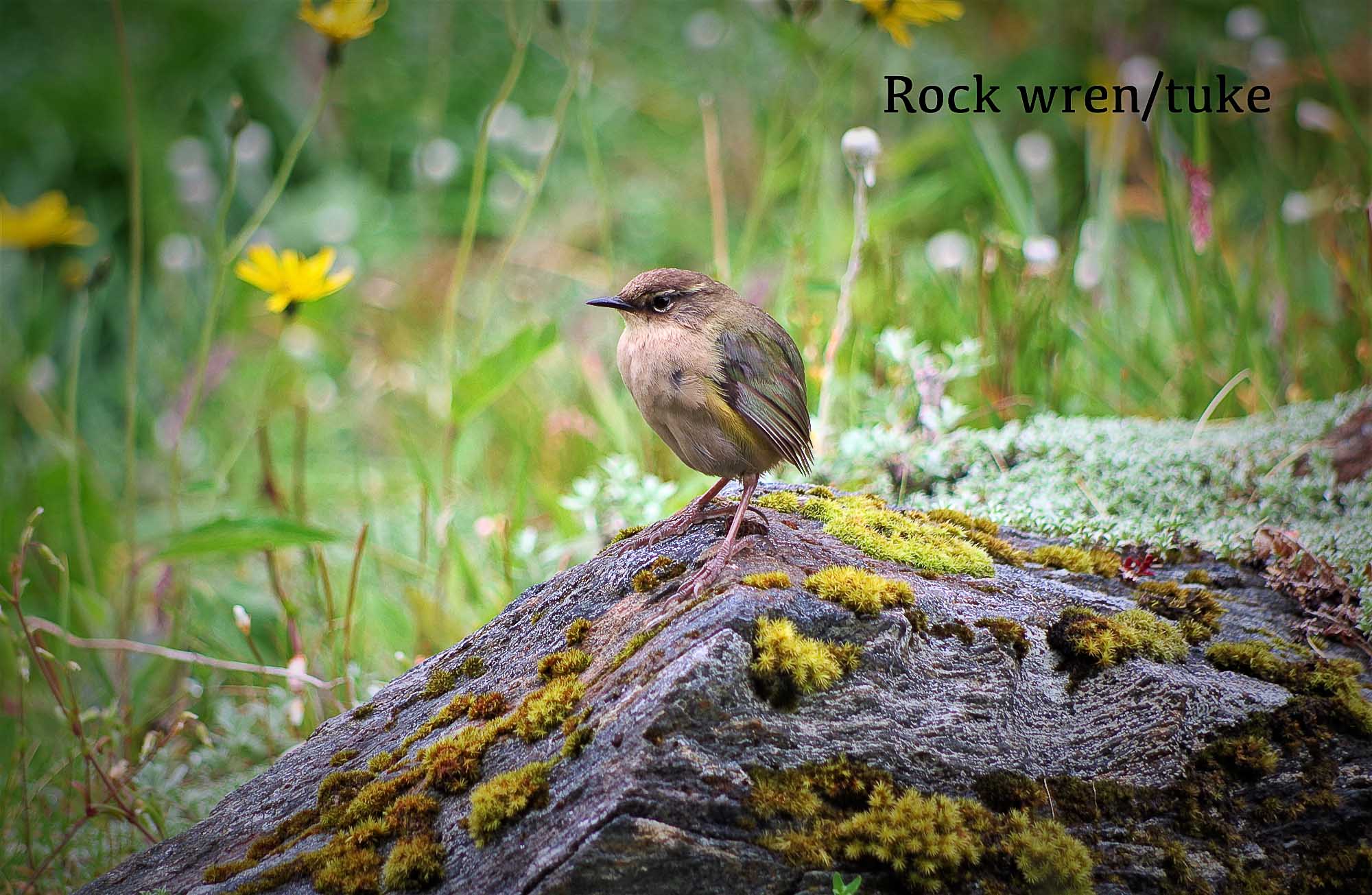The Aspiring Biodiversity Trust were out in full force on Tuesday and Wednesday (11 & 12 August), determined to increase the protection of our important threatened Taonga species in preparation for the upcomming breeding season. Bill Day of Seaworks kindly offered his assistance of considerable helicopter time; thanks to Lydia Bradey, ABT’s Patron recently awarded a New Zealand Order of Merit (ONZM).
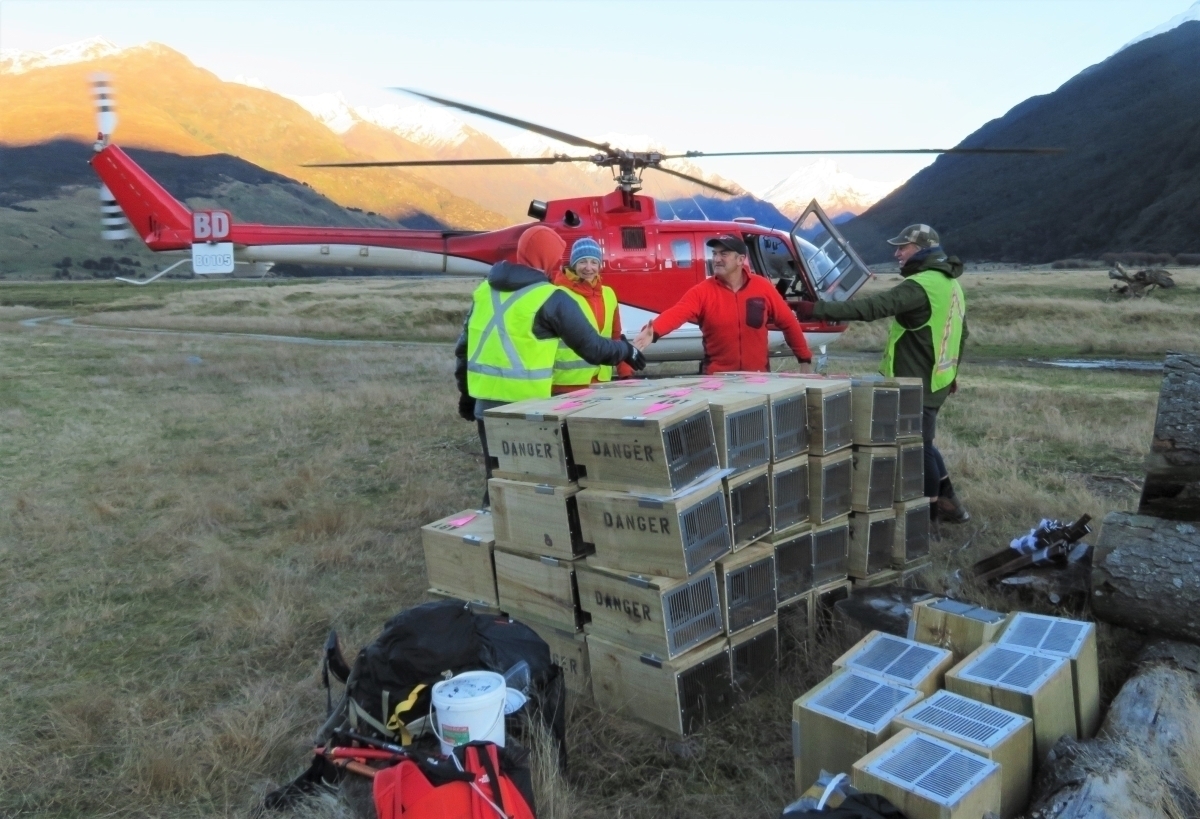
Invasive mammal traps fitted with kea proof fixings were assembled locally then transported to Makarora by vehicle. Here the team (Anthony Coote, Lydia Bradey, Rachel Hufton, Karen Day, Andy Longman) were met by Bill Day (Director of Seaworks keen to contribute to indigenous biodiversity protection) in his B0105 helicopter, equiped with plenty of space for transporting predator traps into the backcountry.
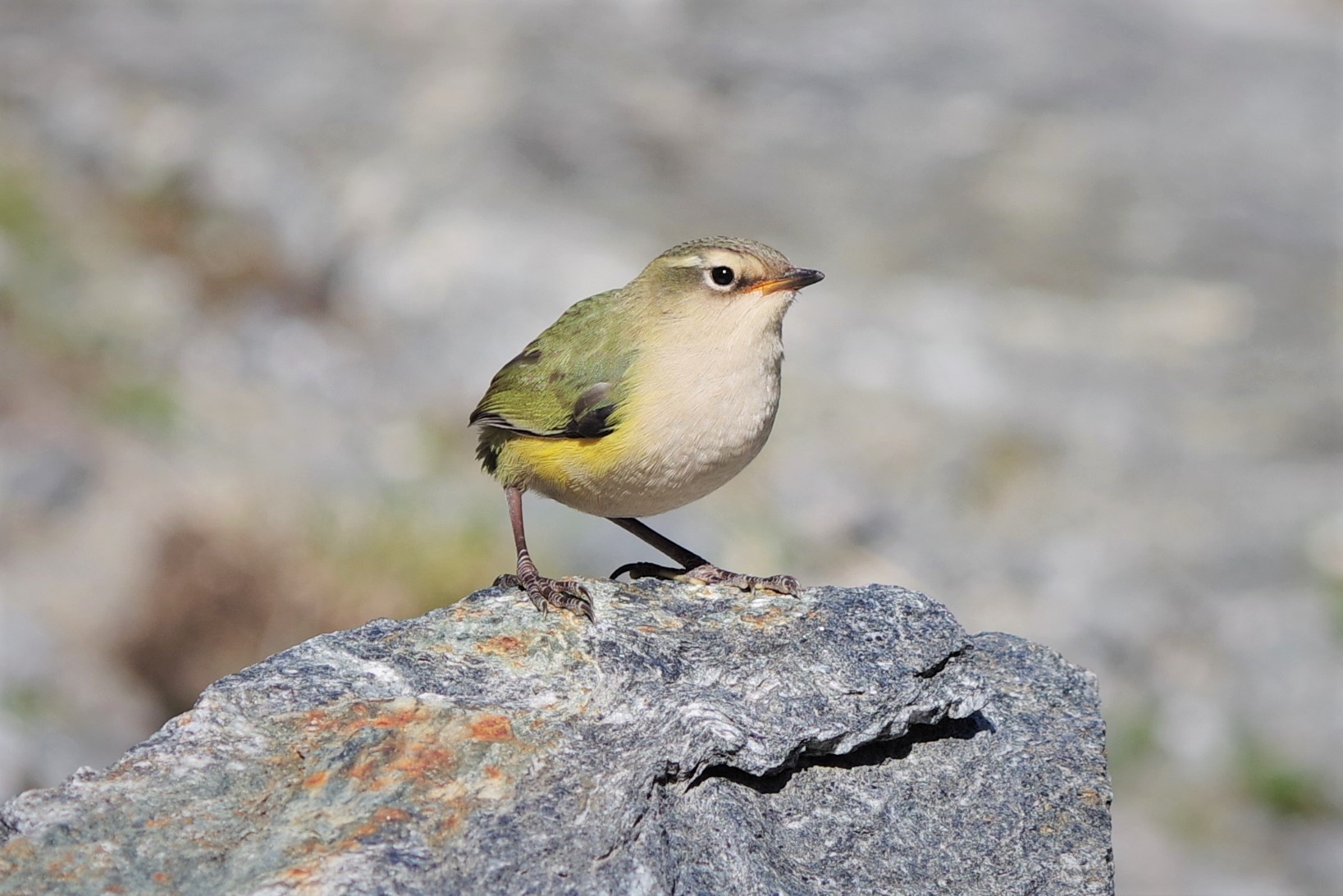
Traps were droped at a number of locations including the upper Siberia, Crucible Basin, upper/lower Lucidus and Wilkin Valley. The locations are of particular importance for remnant populations of the alpine rock wren, the ancient blue duck (whio) and kea (as indentified by ABT surveys and monitoring) and will intensify current predator control regimes.
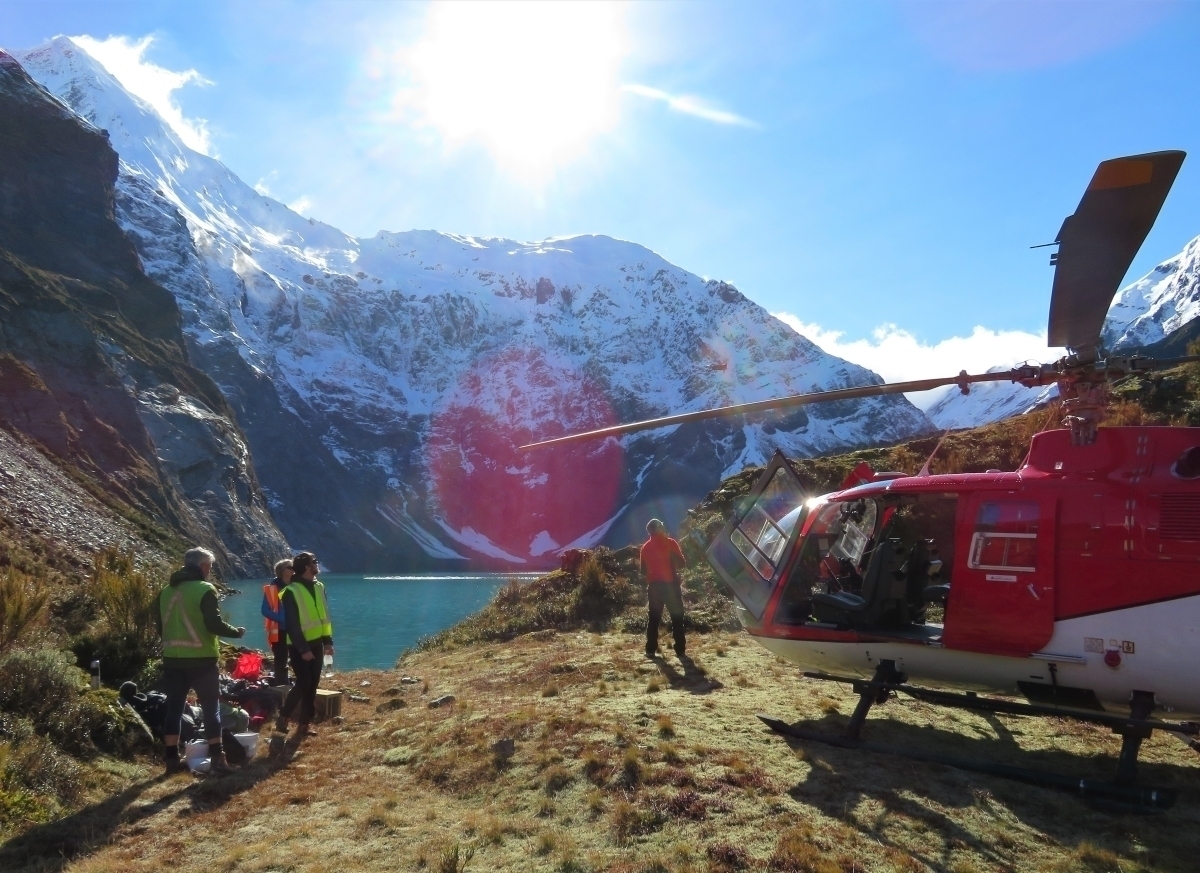
Existing traps identified as triggered from Encounter Solution’s remote monitoring Celium technology were serviced. The new traps will be fitted with detection nodes extending the alpine remote monitoring network. Stoats are currently active within the alpine environment (where rock wren are likely to be particuarly vulnerable in their current state of torpor durung the winter) and down to the river valley (where blue duck frequent whilst foraging for aquatic invertebrates or grazing from algae clad boulders).
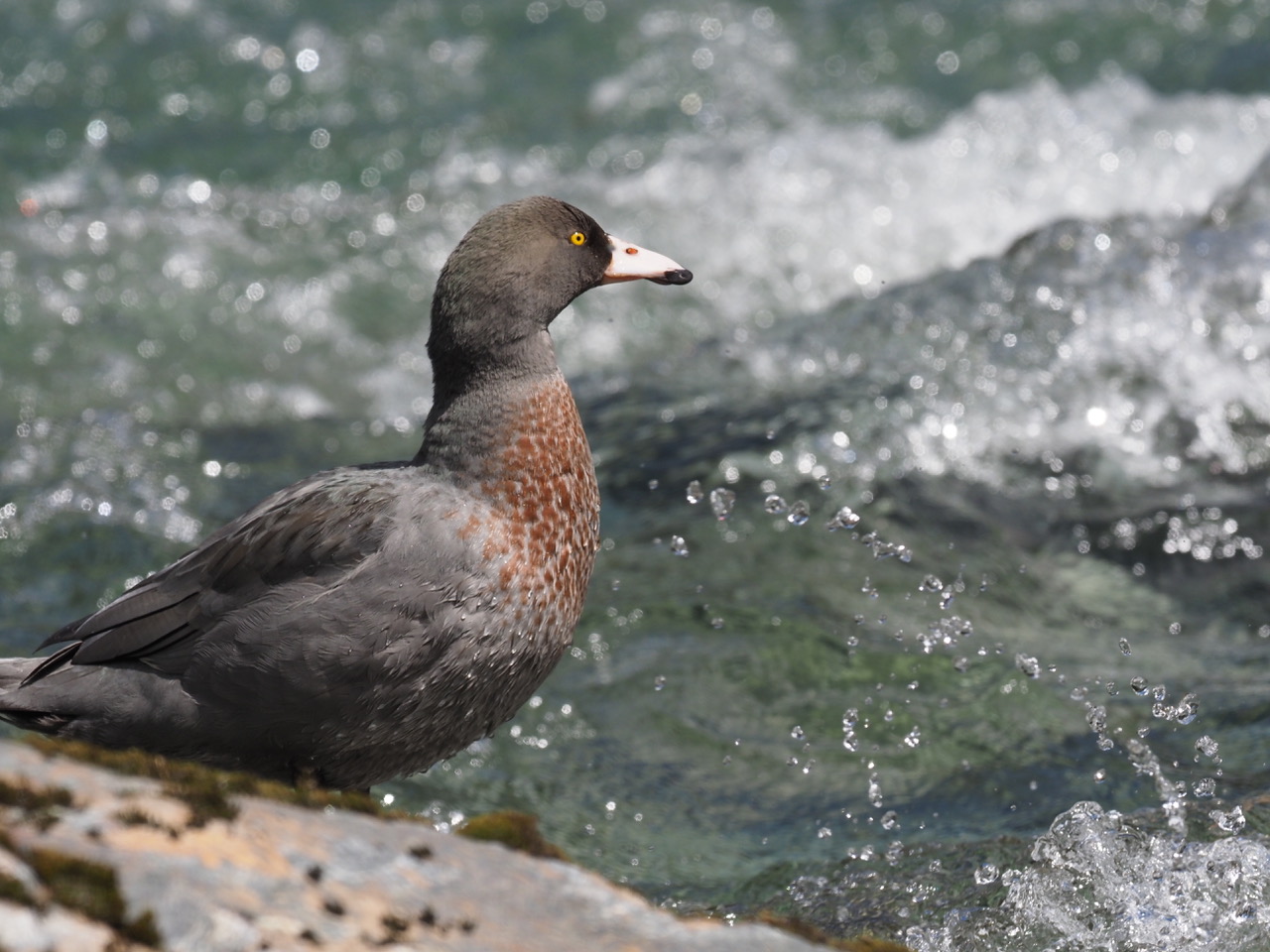
The stoat Mustela erminea is a small mammalian carnivore native to Eurasia and North America. The Wilkin was one of the first New Zealand introduction sites back in 1885’s in an attempt to control rabbits. Usually, the fur is chestnut brown with a white underbelly; the tail has a black tip and is the most distinguishing feature of this mustelid. Some stoats undergo a white moult during the winter in alpine New Zealand, the tail tip remains black as shown in the example below from our last trip.
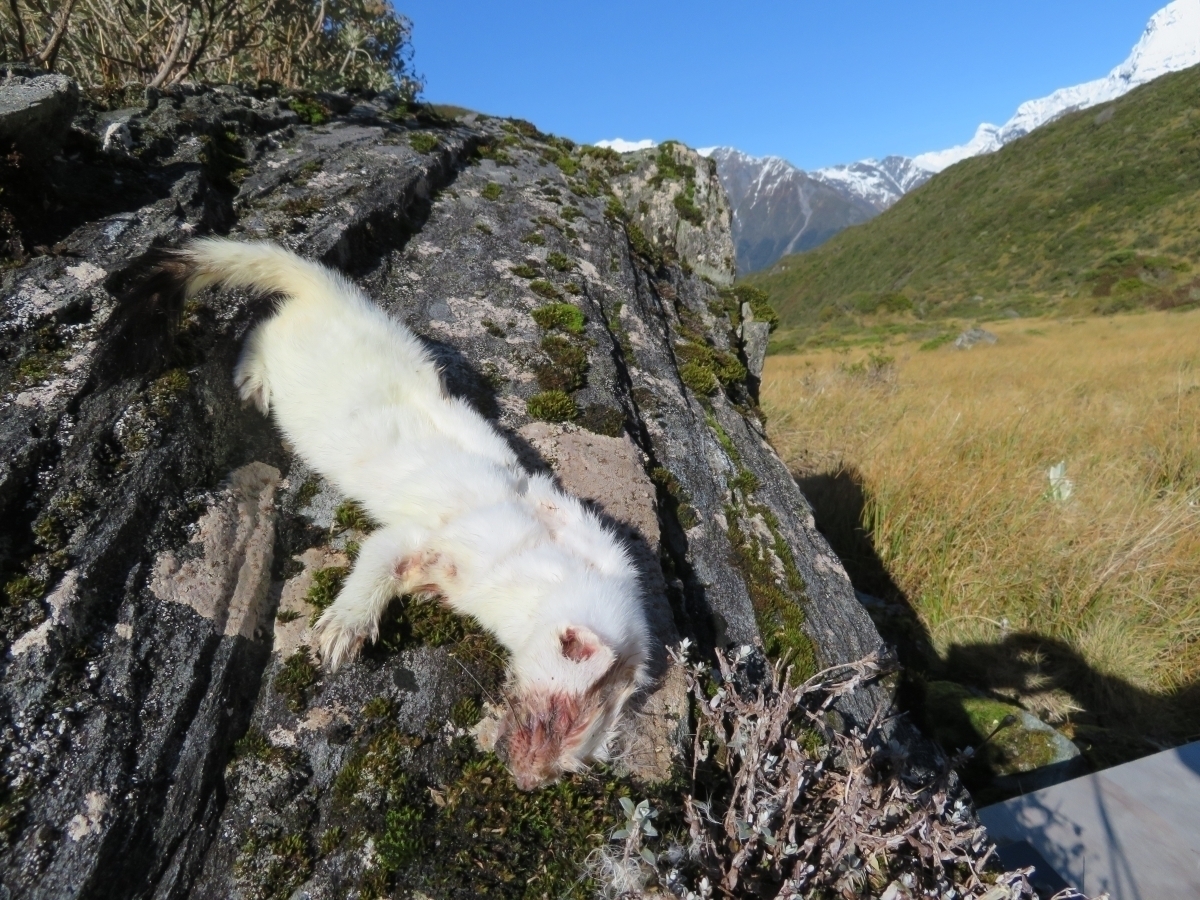
Lydia Bradey and Bill Day discussing the importance of the work Aspiring Biodiversity Trust have been doing to date and taking a moment to appreciate their incredible homeland in what was optimal weather conditions. 🙂
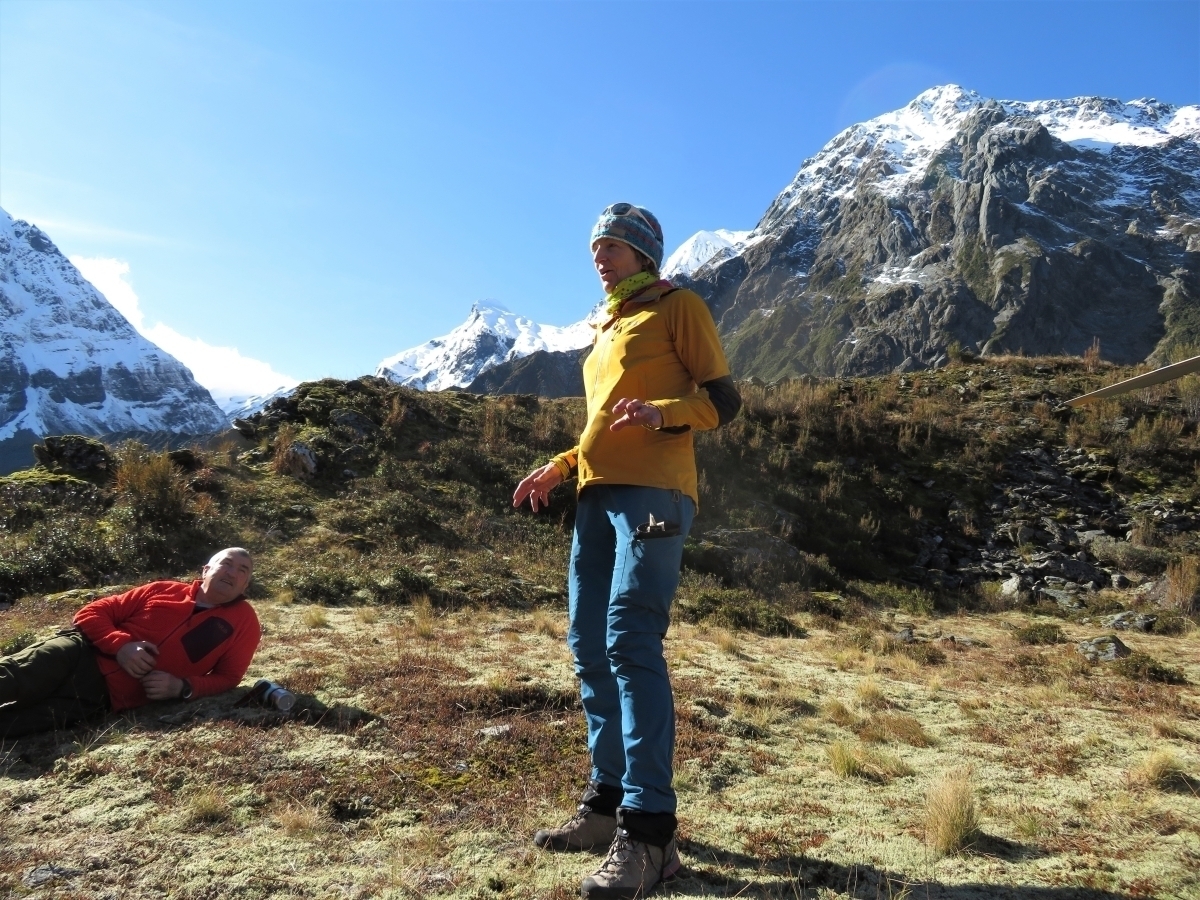
Aspiring Biodiversity Trust actively contributing to the goals of Predator Free 2050 and working towards local and national Biodiversity Strategys through collaborative engagement.
Acknowledgements
With thanks to all our funders, volunteers and incredible supporters particuarly Perry Brooks and Rich Raynes for predator trap assembly, the Department Of Conservation (DOC) for validation of landing sites and Backcountry Helicopters for remainder of team pickup on Wednesday.
